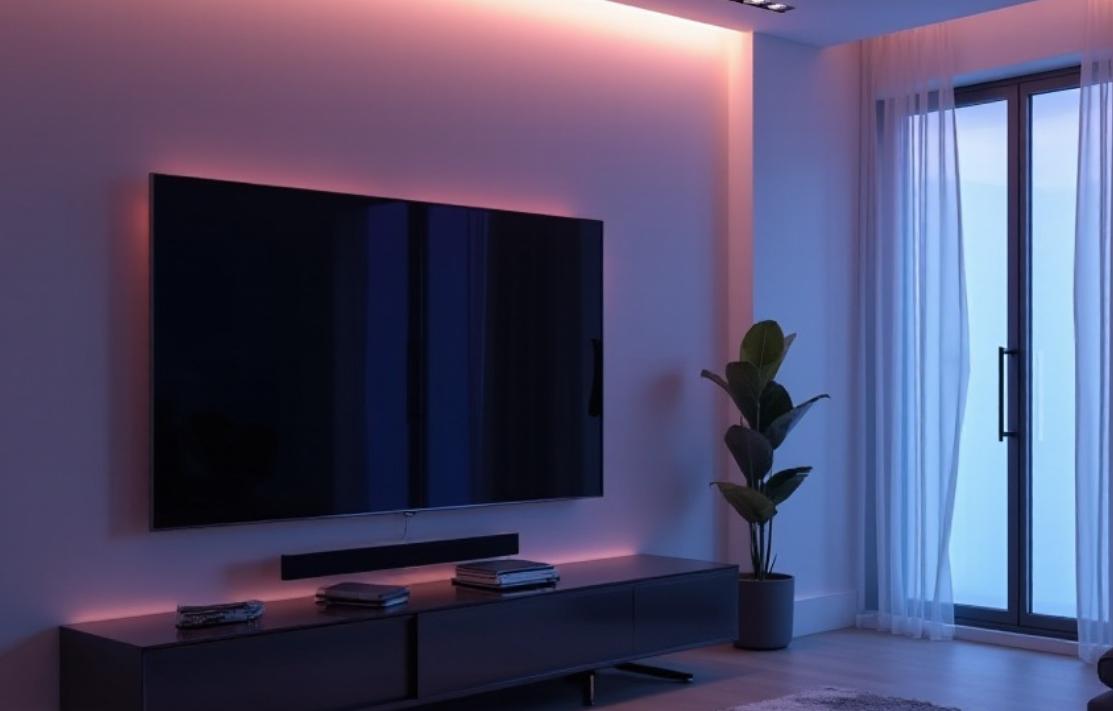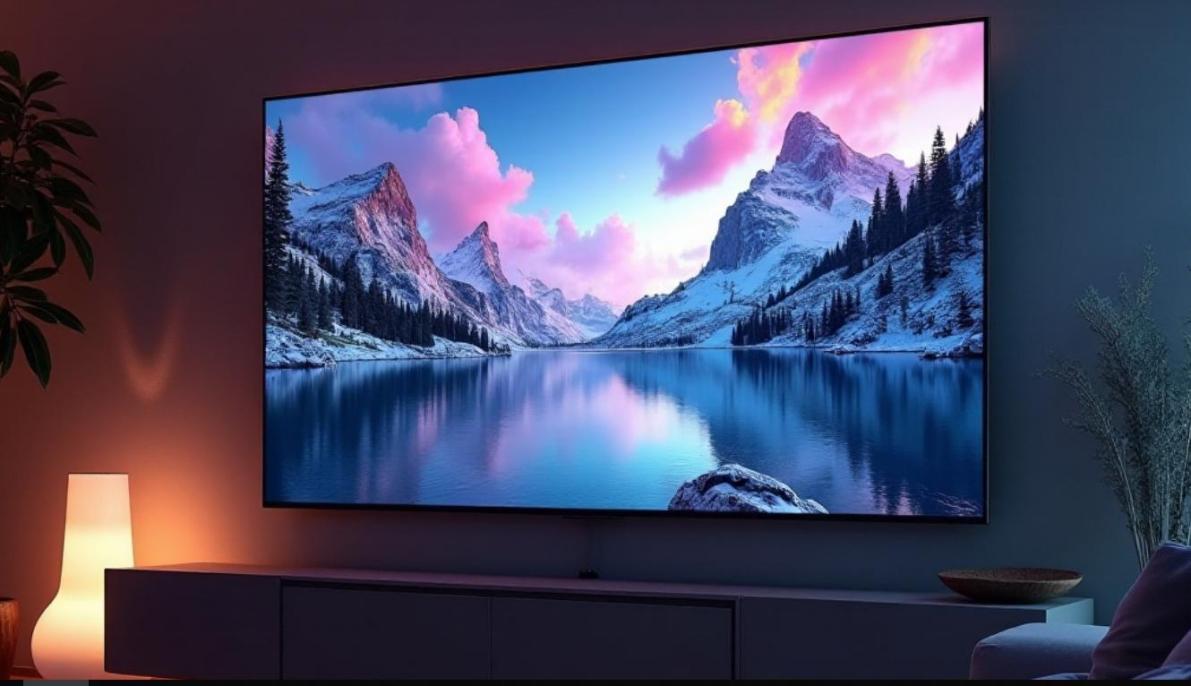
Mounting your TV on the wall can transform your living space, offering a modern look and saving valuable floor space. A well-mounted TV enhances viewing comfort and reduces clutter. However, improper installation can lead to safety hazards and poor aesthetics. This guide provides clear, step-by-step instructions to help you mount your TV securely and stylishly. Whether you're a DIY enthusiast or a first-timer, following these tips will ensure a professional-looking setup that complements your room's design.

What Tools and Materials Do You Need?
Before you begin mounting your TV, gather essential tools and materials to ensure a smooth installation process. You'll need a compatible TV wall mount kit that supports your TV's size, weight, and VESA pattern. A stud finder is crucial for locating wall studs to anchor the mount securely. Use a level to ensure your TV is mounted straight, and a measuring tape for accurate placement and alignment. A drill with appropriate drill bits is necessary for creating holes in the wall to attach the mount, while a screwdriver helps in tightening screws and bolts. A pencil is useful for marking measurements and drill points, and a socket wrench can be handy for tightening bolts securely. If you're mounting on drywall without studs, wall anchors are necessary to provide additional support. Finally, cable management tools like cable covers or raceways can help conceal wires for a clean, professional appearance.
Steps to Mounting Your TV
Mounting your TV involves several key steps. Each step is crucial for a safe and aesthetically pleasing setup.
Determine the Ideal Height and Position
Start by choosing the optimal height and position for your TV. The center of the screen should align with your eye level when seated, typically 42–48 inches from the floor. Consider the room's layout, seating arrangement, and lighting conditions. Avoid placing the TV too high, as it can cause neck strain, or too low, which may lead to an uncomfortable viewing angle. If mounting above a fireplace, ensure the TV is not exposed to excessive heat and is at a comfortable viewing height. Use a measuring tape to mark the desired height and position on the wall, and double-check your measurements before proceeding.
Locate Wall Studs and Mark Mounting Points
Use a stud finder to locate the studs in your wall, as they provide the necessary support for your TV. Slide the stud finder horizontally across the wall until it indicates a stud's presence. Mark the edges of the stud with a pencil to identify its center. Repeat this process to find at least two studs that align with your mounting bracket. Once located, hold the wall mount against the wall at the desired height, ensuring it aligns with the studs. Use a level to confirm the mount is straight, then mark the drilling points through the mount's holes onto the wall.
Attach the Mounting Bracket to the Wall
With the drilling points marked, use a drill to create pilot holes into the studs. The size of the drill bit should match the screws provided with your mounting kit. Once the pilot holes are ready, position the mounting bracket against the wall, aligning it with the holes. Insert the screws through the bracket into the pilot holes and tighten them using a screwdriver or socket wrench. Ensure all screws are securely fastened and the bracket is firmly attached to the wall. Double-check with a level to confirm the bracket remains straight after installation.
Secure the Mounting Arms to the TV
Lay your TV face down on a soft, flat surface to prevent damage. Locate the mounting holes on the back of the TV, which correspond to the VESA pattern. Align the mounting arms from your kit with these holes. Attach the arms using the provided screws, ensuring they are tightened securely but not over-tightened, which could damage the TV. Some mounting arms are adjustable; if so, set them to the appropriate length for your TV. Once attached, verify that the arms are level and firmly secured to the TV.
Hang the TV on the Wall Bracket
With the mounting bracket secured to the wall and the arms attached to the TV, it's time to hang the TV. This step may require assistance due to the weight and size of the TV. Carefully lift the TV and align the mounting arms with the wall bracket. Slide or hook the arms into the bracket according to the manufacturer's instructions. Once the TV is in place, ensure it's securely attached and cannot be easily moved or dislodged. Some mounts include locking mechanisms; engage these to add an extra layer of security. Finally, use a level to check that the TV is straight.
Manage and Conceal Cables
A clean setup involves managing and concealing cables effectively. Start by connecting all necessary cables to the TV, such as power, HDMI, and audio cables. Use cable ties to bundle cables together neatly. To hide the cables, consider using cable covers or raceways that match your wall color, which can be attached with adhesive or screws. For a more seamless look, you can run cables through the wall using an in-wall cable management kit, though this may require additional tools and expertise. Ensure that cables are not stretched tightly and have some slack to prevent damage. Proper cable management not only enhances the aesthetic appeal but also reduces tripping hazards and potential interference.

Tips for Choosing the Right TV Mount
Ensure the mount supports your TV’s size, weight, and VESA pattern for a secure fit. Choose a mount type that matches your room setup: fixed mounts offer a sleek, flush look; tilting mounts help reduce glare from higher placements; full-motion mounts offer maximum flexibility for corner setups or multiple viewing angles. Wall construction matters—use studs for drywall or appropriate anchors for concrete or brick. Finally, consider mounts with built-in cable management systems to keep wires hidden and maintain a clean, organized appearance. Selecting the right mount ensures both safety and visual appeal in your TV setup.
Common Mistakes to Avoid When Mounting a TV
Mounting a TV can enhance your living space, but common mistakes can compromise both safety and aesthetics. One frequent error is positioning the TV too high, leading to neck strain. Ideally, the center of the screen should be at eye level when seated. Another critical oversight is failing to secure the mount to the wall studs; anchoring directly into drywall without proper support can result in instability. Selecting a mount incompatible with your TV's size and weight is also problematic, potentially leading to accidents. Additionally, neglecting cable management can create a cluttered appearance and pose safety hazards. Ensuring the TV is level is essential, as an uneven installation detracts from the room's aesthetics. Lastly, overtightening screws can damage both the TV and the wall. By addressing these issues thoughtfully, you can achieve a secure and visually pleasing TV setup.
Conclusion
Mounting your TV on the wall enhances your living space by saving floor space and providing an optimal viewing experience. By following the outlined steps—selecting the right tools, choosing an appropriate mount, and carefully installing the TV—you can achieve a sleek and secure setup. Remember to avoid common mistakes, such as improper height placement and poor cable management, to ensure both safety and aesthetics. With attention to detail and proper planning, your wall-mounted TV will become a stylish and functional centerpiece in your home.
FAQ
What Is the Recommended Height for Mounting a TV?
The ideal height for mounting a TV is with the center of the screen at eye level when seated, typically between 42 to 48 inches from the floor. This positioning ensures comfortable viewing without straining your neck. However, the optimal height may vary depending on the size of the TV and the seating arrangement. For larger TVs or rooms with higher seating, you may need to adjust the height accordingly. Always consider the specific dynamics of your room to determine the best placement.
Can I Mount a TV on a Plasterboard Wall?
Mounting a TV on a plasterboard (drywall) wall is possible, but it requires careful consideration. It's essential to locate and anchor the mount to wall studs, as plasterboard alone cannot support the weight of a TV. Use a stud finder to locate the studs and ensure the mounting bracket is securely attached to them. If studs are not available in the desired location, you may need to use specialized wall anchors designed for heavy loads or consult a professional installer to ensure safety.